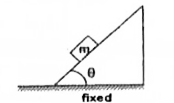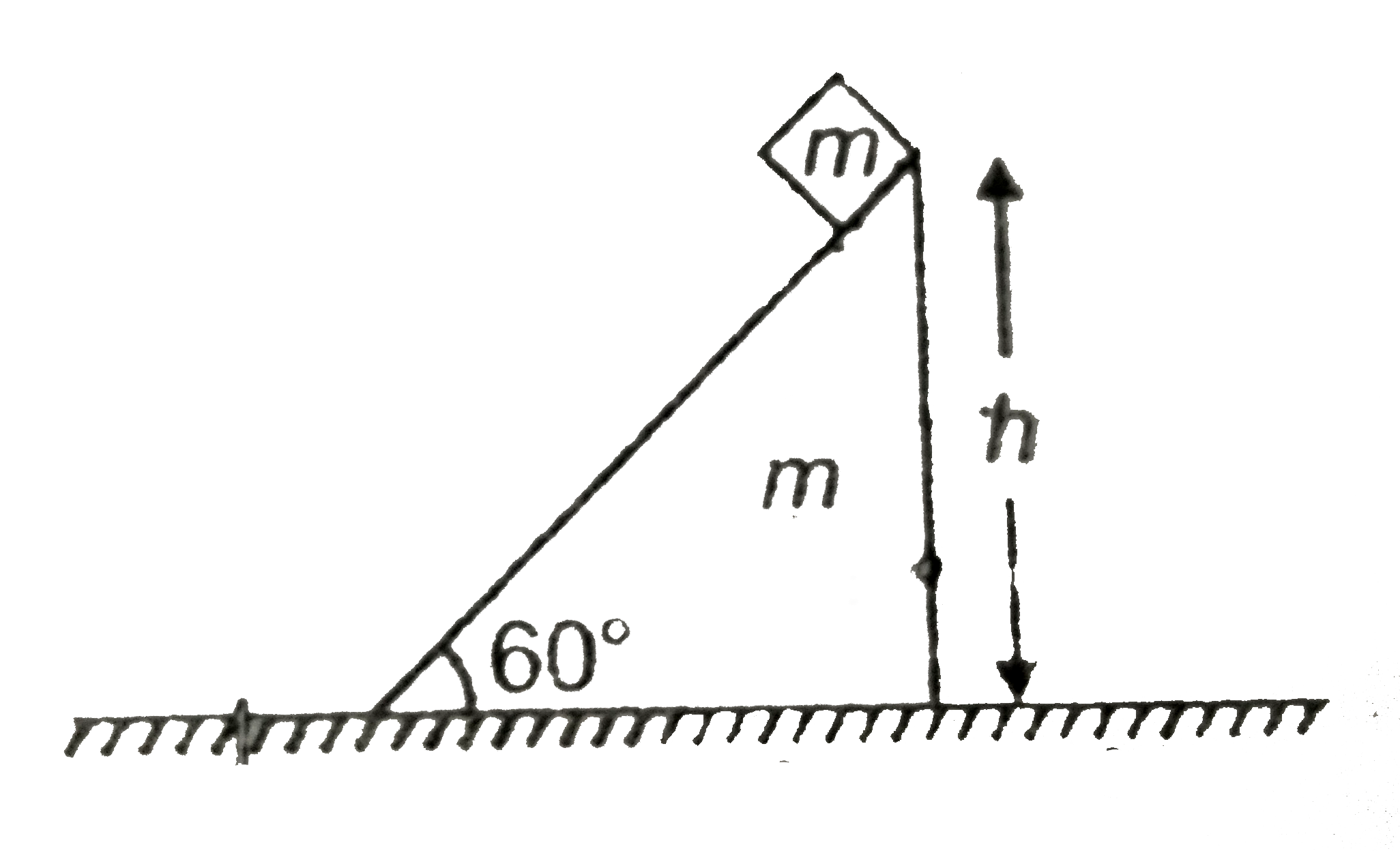A small block of mass m is released from a fixed smooth wedge in figure. Initial point is marked as A. Bottom of wedge is marked as B and at a point C the block stops because the straight part of floor is rough.

The velocity of the block at the midpoint between B to C will be :
√2gh2
√2gh
√gh
√gh2
The correct Answer is:C
( work done by gravity − work done by friction )= change in K.E.
∴Mgh−μmgx02=12mv21−12mv21
=mgh−hx0mgx02=12mv21−0∵μ=hx0
∴mgh2=12mv21⇒vf=√gh
Similar Questions
Knowledge Check
A small block of mass m is released from a fixed smooth wedge in figure. Initial point is marked as A. Bottom of wedge is marked as B and at a point C the block stops because the straight part of floor is rough.

The friction coefficient of the block with the floor is :Ahx0Bx0hCzeroD1A small block of mass m is released from a fixed smooth wedge in figure. Initial point is marked as A. Bottom of wedge is marked as B and at a point C the block stops because the straight part of floor is rough.
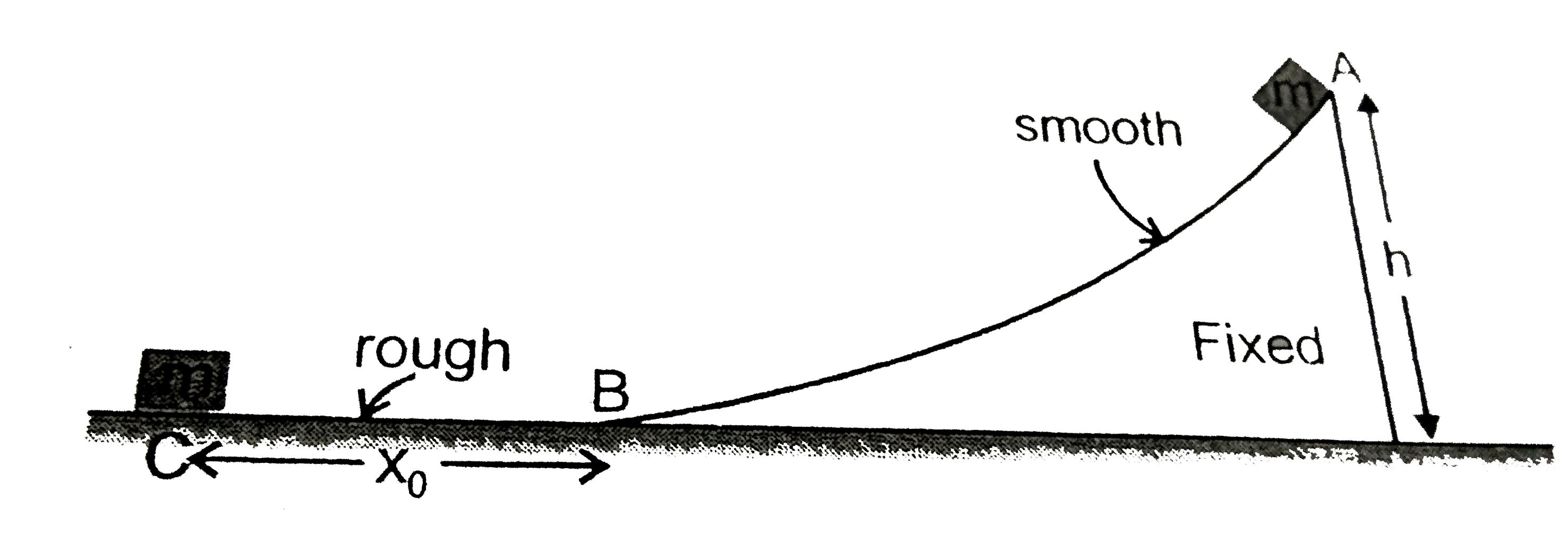
Work donw by normal reaction is zero during the motion of the blockAfrom point A to B onlyBfrom point B to C onlyCfrom A to CDnone of theseA ball of mass m is released from A inside a smooth wedge of mass m as shown in figure. What is the speed of the wedge when the ball reaches point B?
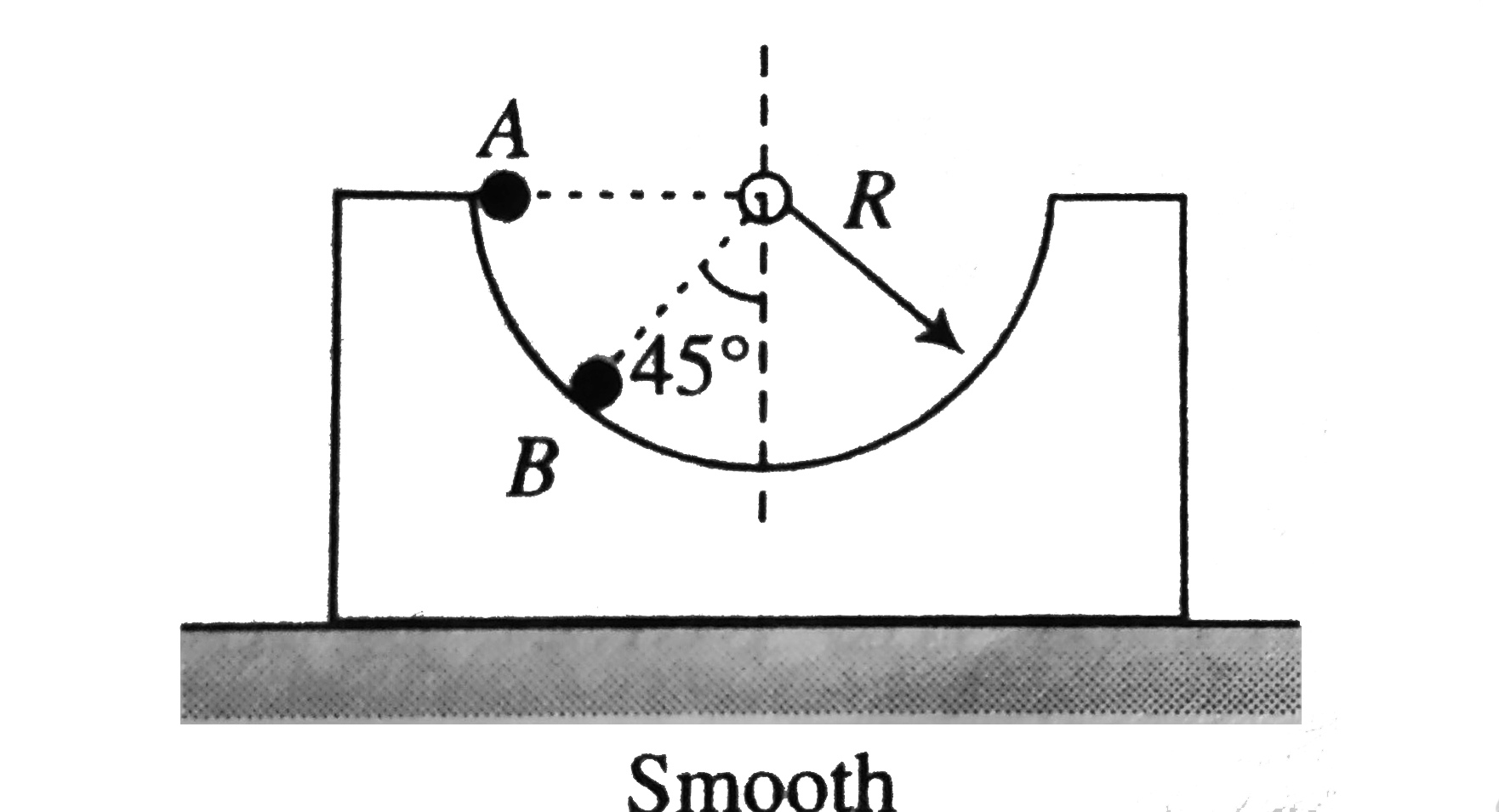 A(a) (gR3√2)1/2B(b) √2gRC(c) (5gR2√3)1/2D(d) √32gR
A(a) (gR3√2)1/2B(b) √2gRC(c) (5gR2√3)1/2D(d) √32gR
A block of mass m is released from the top of a wedge of mass M as shown in figure. Find the displacement of wedges on the horizontal ground when the block reaches the bottom of the wedges. Neglect friction everywhere.
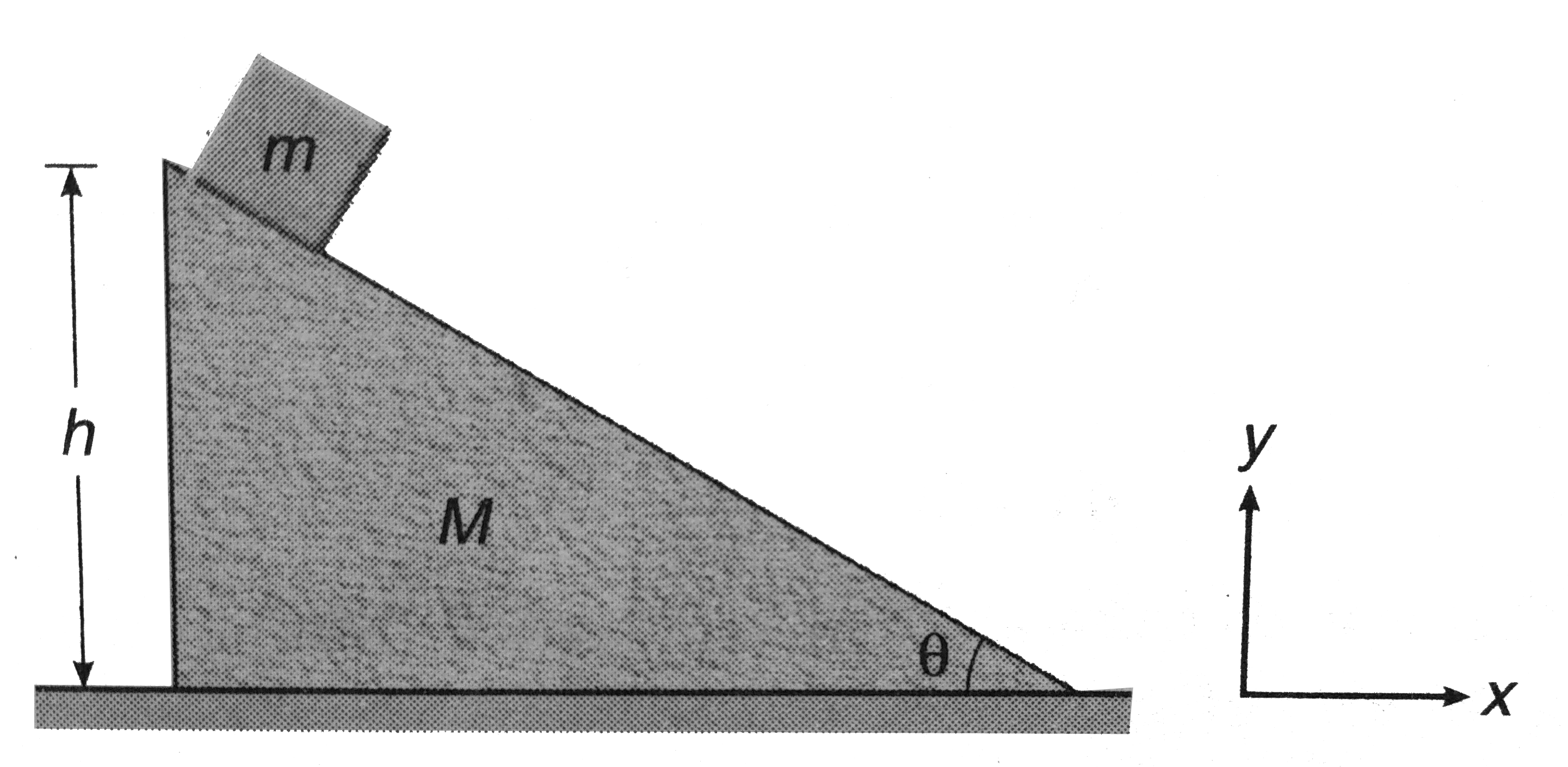
View SolutionA block of mass m is placed at rest on a smooth wedge of mass M placed at rest on a smooth horizontal surface. As the system is released
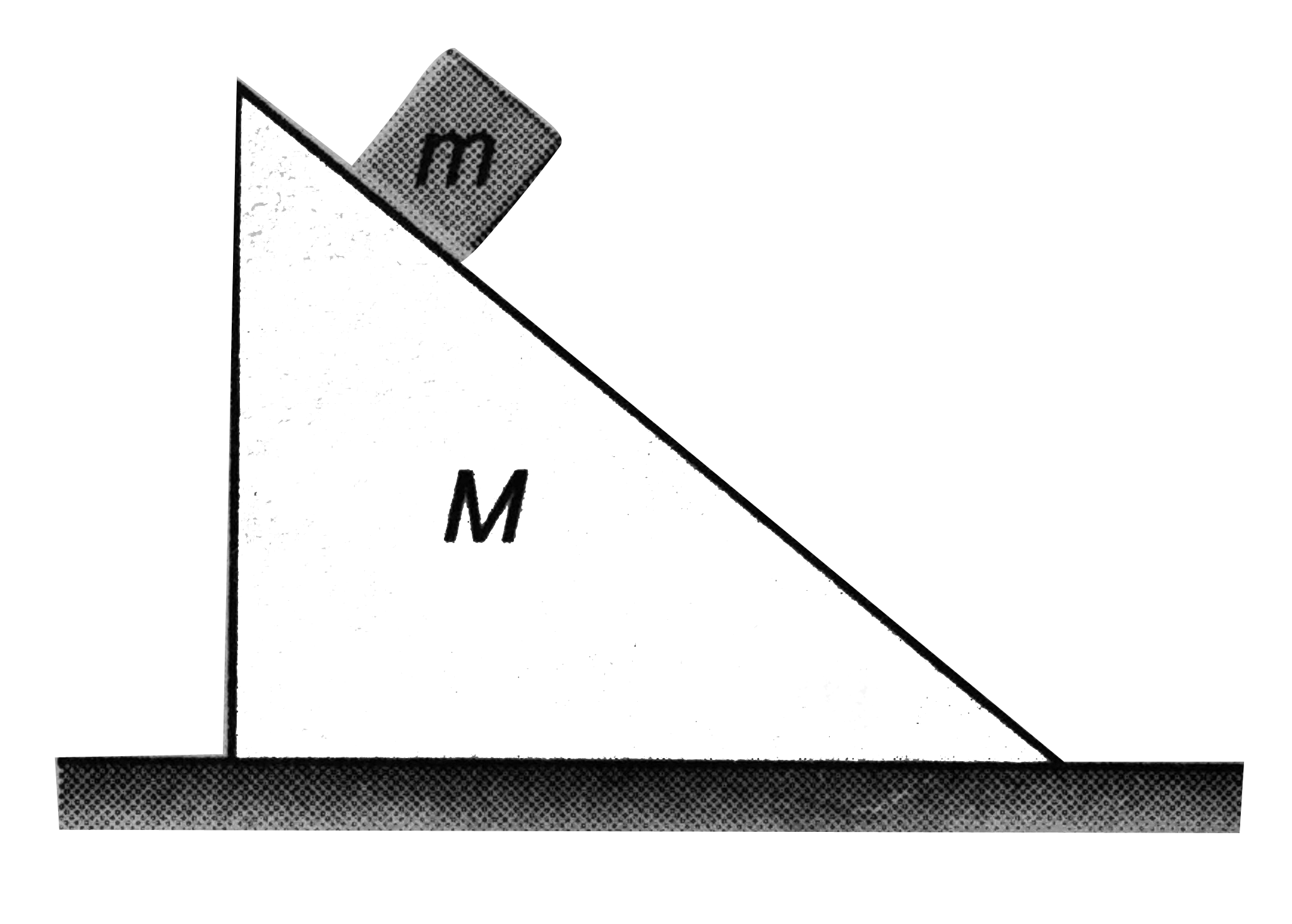
View SolutionFor the figure shown, block of mass m is released from the rest. Find the distance of the wedge from initial position, when block m arrives at the bottom of the wedge. All surfaces are frictionless.
View SolutionA small block of mass m rests on a smooth wedge of angle θ. With what horizontal accelaration a should the wedge be pulled, as shown in fig, so that the block falls freely?
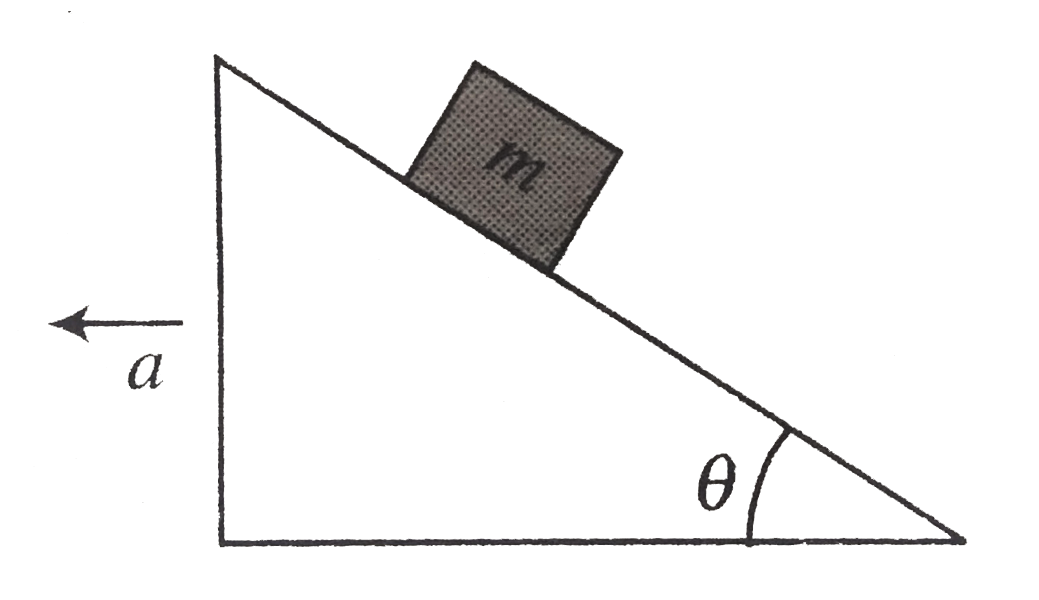
View SolutionA block of mass 1 kg is placed on a wedge shown in figure. Find out minimum coefficient of friction between wedge and block to stop the block on it.
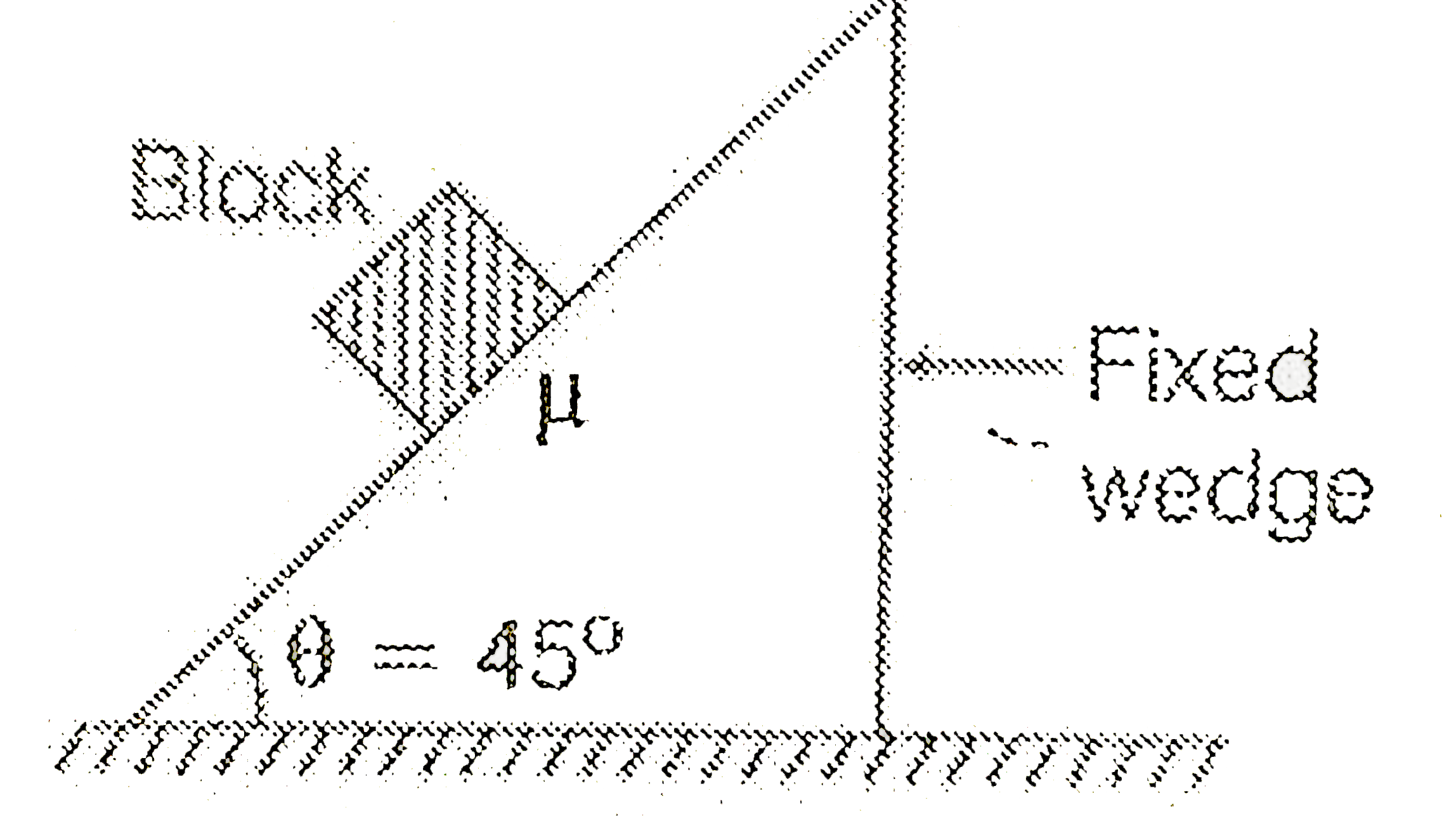
View Solution

